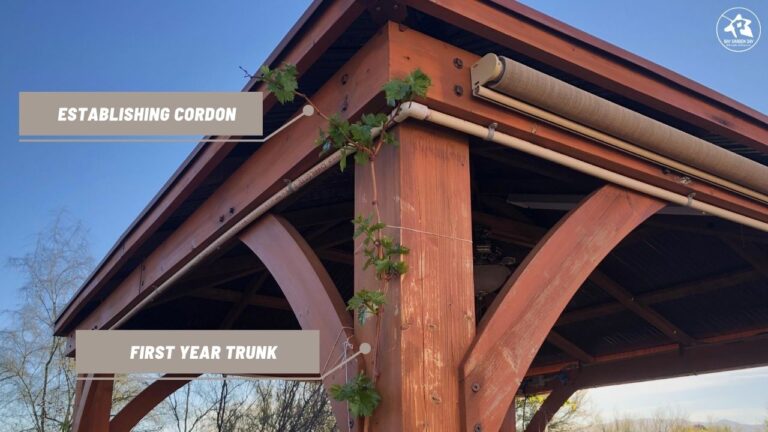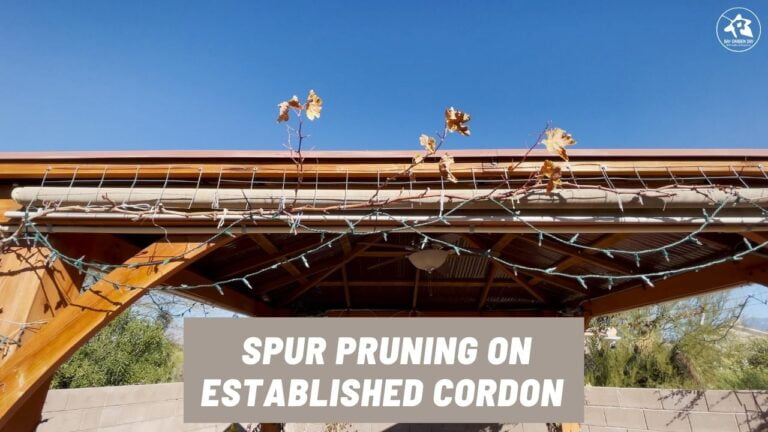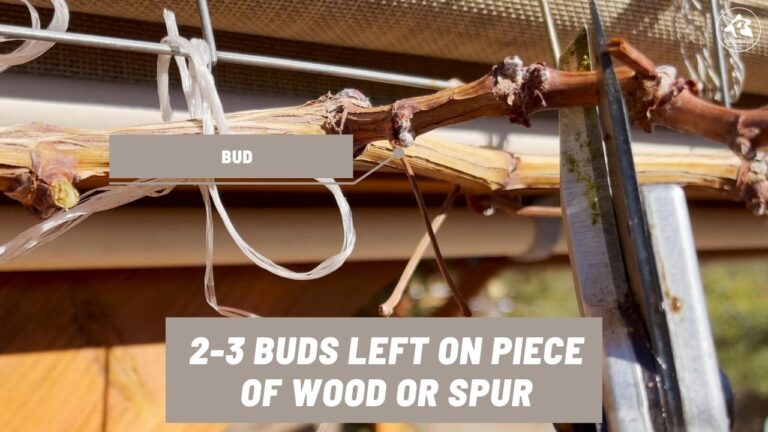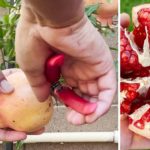If you are a home grape grower, pruning your grapevines is one of the most important tasks you will undertake. Proper pruning is crucial for maintaining healthy and productive vines and can be the key to producing high-quality grapes. Whether you are a novice or an experienced grape grower, understanding the principles of grapevine pruning is essential for maximizing yield and maintaining vine health. This article will discuss the basics of grapevine pruning in a home vineyard, including when and how to prune, the different types of pruning cuts, and the tools you’ll need to get the job done. By the end of this article, you’ll be ready to tackle the task of pruning your grapevines with confidence and ensure a bountiful harvest for years to come.
Table of Content
What is grape pruning?
Grape pruning is the essential practice of selectively removing grapevine parts to promote healthy growth, increase fruit yield, and improve grape quality. It involves using sharp pruning tools to remove unwanted wood, leaves, and buds from the vine. By carefully controlling the vine’s growth and fruiting potential, grape pruning allows for better light penetration, air circulation, and nutrient uptake, resulting in more vigorous vines and flavorful grapes. Proper grape pruning requires skill, knowledge, and attention to detail but can ultimately lead to higher quality and more profitable grape harvests.
Why prune grape vines?
Grape pruning is necessary to promote the health and productivity of grapevines. By removing old or diseased wood, controlling the vine’s growth, and shaping it into an optimal form, grape pruning helps to prevent diseases, pests, and other potential problems that can harm the vine. Additionally, pruning helps to balance the vine’s fruiting potential, resulting in higher-quality grapes and better yields.
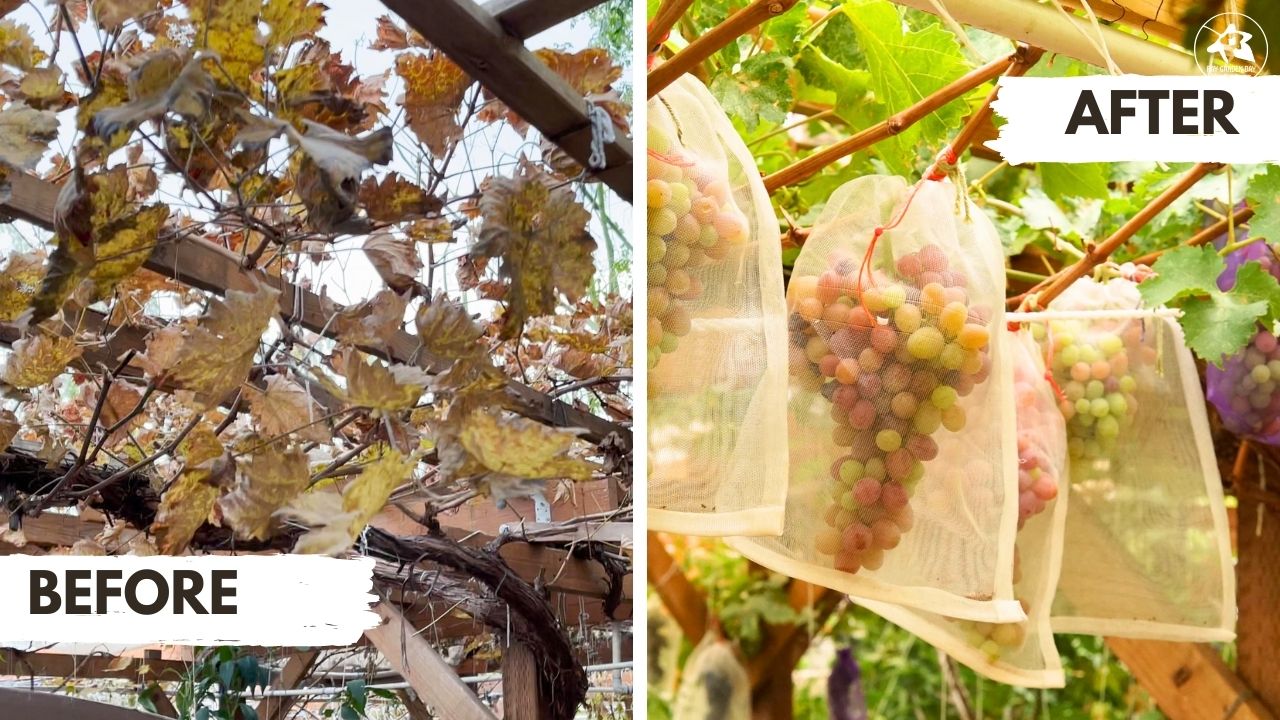
What if you don’t prune a grapevine
Without pruning, grapevines can become overgrown, resulting in poor fruit quality, reduced yields, and increased susceptibility to pests and diseases.
- Excessive foliage can reduce light penetration and air circulation within the vine, leading to increased humidity and a higher risk of fungal diseases like powdery mildew and botrytis.
- Too many leaves can lead to lower fruit quality. The vine may put more energy into producing leaves rather than ripening the fruit, resulting in lower sugar content, less flavor, and reduced color in the grapes.
- A dense vine can make it challenging to identify and treat pest and disease issues in the vineyard. With too many leaves, it can be hard to spot signs of infestations and take necessary actions to control them.
When to prune grape vines
Young vine pruning
Prune newly planted grapevine to promote a strong trunk and healthy growth. It would be best to begin by removing all but one vigorous shoot from the base of the plant. The remaining shoot, which would become your permanent trunk, should be trained to a stake or support system and allowed to grow to a certain height, typically around 2-3 feet.
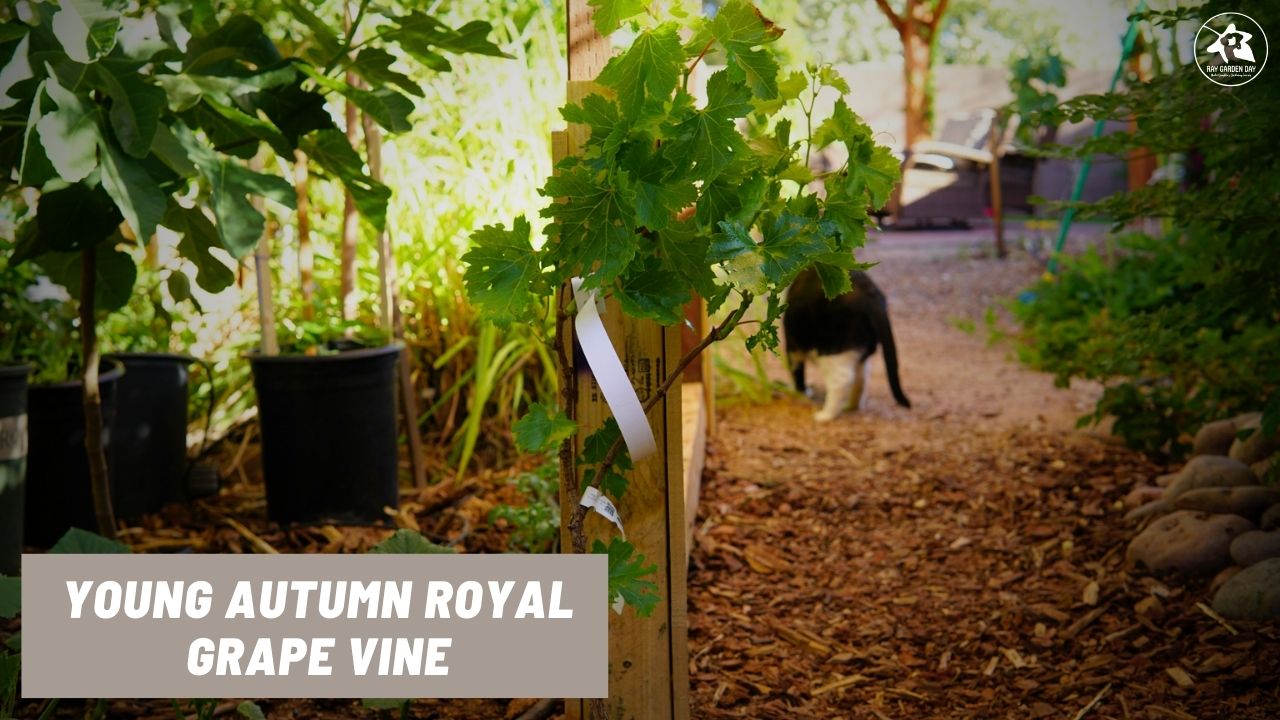
Once the shoot has reached the desired height, pinch off the top to encourage lateral shoot growth. These lateral shoots will serve as the main arms of the vine and select two or three of the most vigorous shoots to train along the support system.
Throughout the growing season, you should monitor the vine’s growth and remove any unwanted shoots or leaves to promote optimal light penetration and air circulation within the vine. In addition, by regularly pruning newly planted grapevines, you can establish a robust framework for the vine and ensure that it produces high-quality fruit in the years to come.
Established vines pruning
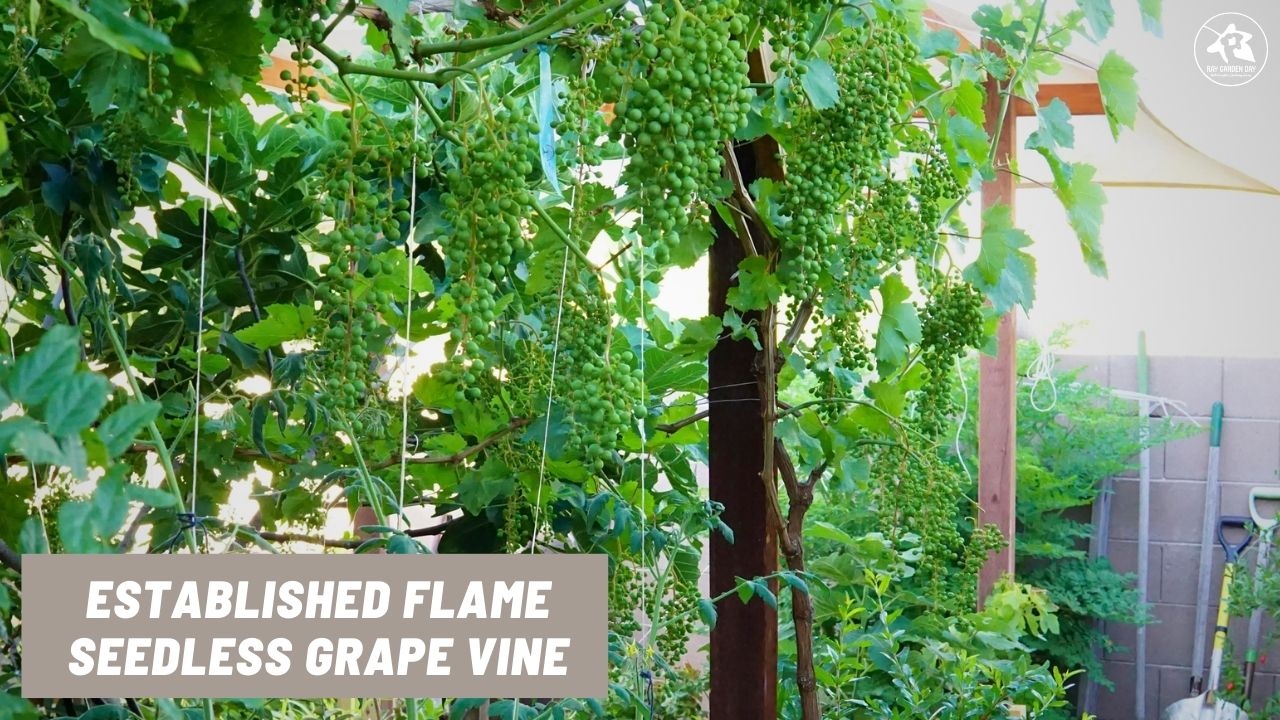
Pruning of established vines should be done during the dormant season, usually between December and March, before bud break. However, the exact timing of pruning may depend on factors such as grape variety, climate, and growth habits.
Here are some common grape varieties and their recommended pruning times:
- Thompson Seedless: Prune in late winter or early spring before the buds swell. (I grow Princess Grape, a cross between Thompson Seedless and another grape variety called Princess which has similar growth habits)
- Cabernet Sauvignon: Prune in late winter or early spring, before bud break.
Chardonnay: Prune in late winter or early spring, before bud break. - Pinot Noir: Prune in late winter or early spring before bud break.
- Merlot: Prune in late winter or early spring before bud break.
Riesling: Prune in late winter or early spring before bud break. - Zinfandel: Prune in late winter or early spring before bud break.
- Syrah: Prune in late winter or early spring before bud break.
- Muscat: Prune in late winter or early spring before bud break.
- Sauvignon Blanc: Prune in late winter or early spring, before bud break.
Pruning in different climates
Some examples of grape pruning practices in different climates:
Cool climate (e.g., Finger Lakes, NY):
- Pruning is typically done later in the dormant season, usually in March or early April, to avoid damage from late spring frosts.
- Cane pruning is preferred over spur pruning, as it provides better cold hardiness.
Mediterranean climate (e.g., Napa Valley, CA):
- Pruning usually occurs in late winter to early spring, before bud break.
- Cane pruning is commonly used, as it provides a good balance between vegetative growth and fruit production.
Continental climate (e.g., Okanagan Valley, BC):
- Pruning is usually done in late winter or early spring, but timing can vary depending on weather conditions.
- Spur pruning is commonly used, allowing for better vine vigor and yield control.
Humid subtropical climate (e.g., Hunter Valley, Australia):
- Pruning is usually done before bud break in late winter or early spring.
- Cane pruning is preferred over spur pruning, as it helps to manage vine vigor and fruit quality in hot and humid climates.
We’re in Zone 9a, and I prune my grapevines after the last frost has passed to ensure that the vines are not vulnerable to cold damage and frost injury.
I recommend checking which climate zone you are in using the USDA zone; follow these steps:
- Check the USDA Plant Hardiness Zone Map website
- The map will display your location and the corresponding USDA hardiness zone.
- Use the color-coded legend on the right side of the map to determine which climate zone you are in based on the average minimum winter temperatures in your area.
- Look up the recommended grape varieties and pruning practices for your specific climate zone to ensure optimal vine health and fruit production.
It’s important to note that while the USDA zone is a helpful tool, it doesn’t account for other essential climate factors such as rainfall, humidity, and wind. These factors can also impact grape growing and pruning practices, so it’s vital to consider all relevant factors when planning your vineyard management strategy.
Additional growing season pruning
Additional vineyard management practices are often performed during the growing season, rather than during the dormant season like pruning. These are:
- Shoot thinning: Shoot thinning is typically performed during the early to mid-growing season, usually around late spring or early summer. It involves selectively removing excess shoots or suckers that may have emerged from the main cane or spur positions. Shoot thinning helps to manage vine vigor, improve airflow within the canopy, and ensure optimal light penetration to the grape clusters.
- Berry thinning: Berry thinning is done during the late spring or early summer after the fruit has set and started to grow. This practice involves removing some grape clusters or individual berries to regulate crop load and improve fruit quality. By reducing the number of clusters or berries, berry thinning allows the remaining fruit to receive more nutrients, sunlight, and airflow, resulting in better ripening and flavor development.
It’s important to note that these are just general examples, and grape pruning practices can vary depending on your location and grape variety characteristics.
Pruning grape berries can result in larger and more uniform grapes.

How to prune grapevines
Having the right tools and techniques will allow you to prune grapevine effectively. This section will explore the tools needed for grape pruning and the different methods, including spur and cane pruning.Tools for grapevine pruning
To properly prune grapevines, it’s essential to have the right tools. Here are some of the tools commonly used in grapevine pruning:- Pruning shears are handheld tools for cutting small branches, canes, and spurs. They come in different sizes, and choosing the right size for the job is vital to ensure clean cuts and prevent damage to the vine.
- Loppers are used to cut thicker canes or branches too large for pruning shears. They have long handles that provide leverage to make cutting easier.
- Pruning saw is for cutting larger branches or canes too thick for loppers. They have a long blade that can make clean cuts with minimal damage to the surrounding wood.
- Gloves are essential for protecting the hands from thorns, cuts, and scrapes.
- Eye protection, such as glasses, will protect your eyes from flying debris while pruning is essential.
- Disinfectant is to disinfect the pruning tools between cuts and between vines to prevent the spread of disease.
Prune methods: Spur pruning and Cane pruning
There are two main grapevine pruning methods: spur and cane.Which grapevine pruning method is right for you?
Both pruning methods have advantages and disadvantages, and the choice between them depends on the specific grape variety, growing conditions, and your goal. Use whatever method fits your purpose and follow the best practices for grape pruning.Spur pruning
Spur pruning involves cutting back the previous year’s growth to a set number of buds, usually 2-3 buds. This method encourages the development of short spurs on the main arms (cordons) of the vine, which produce new shoots and fruiting canes for the next growing season. I adopt the spur prune method of all my vines to train them to grow on grape trellises for shade and fruit.
Spur pruning step-by-step guide
Here’s a step-by-step guide on pruning a grapevine using the spur pruning method:
- Begin by identifying the main trunk, and cordons (lateral arms), that will be retained for the upcoming season.
- Look for the previous year’s growth on a cordon and identify the healthiest and most vigorous shoots. These will be the ones that are retained for spur pruning.
- Using a sharp pair of pruning shears, cut back the selected shoots to 2-3 buds, leaving behind a small piece of wood or spur.
- Continue to prune all selected shoots on the cordon, leaving 4 to 5 inches (10 to 12 centimeters) of space between each spur (shoot).
- Repeat this process on the remaining cordons.
- Finally, remove any unwanted or damaged wood from the grapevine, and clean up the pruning debris from the area around the plant.
Cane pruning
Cane pruning, on the other hand, involves selecting one or two long canes from the previous year’s growth and training them along the support system. Then, the canes are pruned back to a set number of buds, usually around 8-12 buds, and these buds will produce new shoots and fruiting canes for the next growing season. Commercial growers favor cane pruning because it increases yields and makes the vine less susceptible to Eutypa, a fungal disease caused by spores that infect the vine by fresh pruning cuts on the spurs.
Cane pruning step-by-step guide
Here’s a step-by-step guide on pruning a grapevine using the cane pruning method:
- Before pruning, inspect the grapevine for any dead, diseased, or damaged wood. Remove any damaged wood, as it can harbor pests and diseases.
- Identify the strongest and most vigorous canes for fruit production. The number of canes to keep can vary depending on the variety and training system.
- Cut back to a set number of buds: Prune the selected canes back to a set number of buds. The number of buds to keep will depend on the variety and growing conditions. Generally, leave 6-10 buds per cane.
- Remove unwanted shoots: During the growing season, monitor the vine’s growth and remove any unwanted shoots that emerge from the base or from the canes that have been pruned. These shoots take away resources from the fruiting canes and reduce fruit quality.
- Thin leaves: Remove some leaves on the fruiting canes to promote better air circulation and light penetration. Thinning the grape leaves can help reduce the risk of pests and diseases and improve fruit quality.
- Disinfect tools: Disinfect pruning tools between cuts and between vines to prevent the spread of diseases.
Tips for successful grape pruning
By following these tips, you can achieve successful pruning and promote healthy growth and fruit production in their vines.- Know your grape variety: Different grape varieties have different growth habits and pruning requirements. Understanding the growth habit of your grape variety can help you determine the best pruning strategy.
- Prune at the right time: Prune grapevines during their dormant period, typically in late winter or early spring, before the buds swell.
- Use the right tools: Using sharp and high-quality pruning tools can make pruning easier and more effective. It’s also important to disinfect the tools between cuts and between vines to prevent the spread of disease.
- Choose the right training system: Many grapevine training systems require a different pruning strategy. Choose a training system that is appropriate for your site and grape variety.
- Prune for fruit production: Pruning encourages fruit production while maintaining the vine’s health. When pruning, focus on removing old, weak, or diseased wood and leaving the strongest and healthiest canes.
- Don’t over-prune: Overpruning can reduce yields and stress the vine. It’s essential to balance removing enough wood to promote healthy growth and leaving enough to support the vine.
- Monitor growth: Keep an eye on the vine throughout the growing season and remove any unwanted shoots or suckers that emerge. Doing so will help prevent the vine from becoming overgrown and direct energy toward fruit production.
Pruning mistakes to avoid
Proper grapevine pruning can be daunting for new or inexperienced grape growers. To help avoid common mistakes, here are some tips to keep in mind:- Waiting too long to prune: Overgrown and tangled vines are challenging to manage and may produce lower-quality fruit.
- Pruning at the wrong time: Prune during the growing season or too early or late in the dormant season can stress the vine and reduce fruit production.
- Improper use of pruning tools: Dull or dirty cutting tools can damage the vine and spread disease. Make sure to keep pruning tools sharp, clean, and properly disinfected.
- Over-pruning or under-pruning: Over-pruning can reduce yields and stress the vine, while under-pruning can result in tangled, unproductive vines. Try to find the right balance and prune strategically.
- Pruning too much of the current year’s growth: The current year’s growth, or “green wood,” is vital for fruit production. Pruning too much of this growth can reduce yields and affect the overall health of the vine.
- Not considering the training system: Different training systems require different pruning strategies. Choose a training system appropriate for your site and grape variety, and prune accordingly.
Unlock the full potential of your backyard vineyard and enjoy the sweet, succulent fruits of your labor with these expert tips and tricks.

- I suggest mulching around the base of the grapevine to retain soil moisture, suppress weeds, and regulate soil temperature. Organic mulches like straw, hay, or wood chips can also improve soil fertility as they decompose over time.
- It would be best to thin out fruit clusters early in the season, leaving only a few clusters per shoot to help ensure that the remaining grapes will develop adequately and fully ripen. I have a Grape berry thinning: when and how to do just that.
- Prevent powdery mildew, downy mildew, and black rot. You can do this by keeping the grapevines clean, well-aerated, and debris-free. Additionally, you can apply organic fungicides and follow good sanitation practices to reduce disease risk.
- Watch for pests such as Japanese beetles, grape leafhoppers, and spider mites. Western grapeleaf skeletonizer is a common pest in the eastern half of the United States and the California wine regions. You should monitor the grapevines regularly and take action at the first sign of an infestation.
Grapevine pruning can be challenging, but with the right tools, techniques, and knowledge, it can also be a rewarding and enjoyable experience. By taking the time to prune your grapevines properly, you can help ensure healthy growth, high-quality fruit, and a bountiful harvest. Remember to consider the specific needs of your grape variety and site and avoid common pruning mistakes. Happy pruning!
Grape pruning FAQs
Spurs originate along the length of the cordon. With cane pruning, several buds are retained on one-year-old wood. Canes are longer and contain more buds than spur. Typically several buds are retained per cane when cane pruning.
Prape pruning practices can vary depending on your location and grape variety characteristics. Pruning should be done during the dormant season, usually between December and March, before bud break. However, some climates require pruning in early April after the last frost to avoid frost damage.
If you prune grape vines too early before they are fully dormant can cause them to be more susceptible to frost damage, cold injury, and potential damage from disease or pests.
Yes. Pruning should be done throughout the growing season and remove any unwanted shoots or leaves to promote optimal light penetration and air circulation within the vine. Thinning of grape berries will also help to improve overall yield.
The best pruning system for a grape arbor will depend on the specific grape cultivar, the climate and growing conditions, and the desired fruit yield. However, with spur pruning, you can train cordons laterally along the arbor to maintain a balanced and well-spaced canopy of fruiting shoots.
References and further reading
- Strik, B. (n.d.). Growing Table Grapes
- University of California Agriculture and Natural Resources. (n.d.). Growing Grapes (table, wine, raisins) in Your Backyard
- Pruning Backyard Grapevines in the First Three Years. (n.d.). Ohioline


